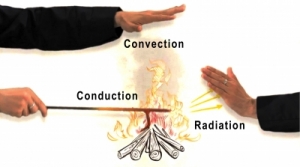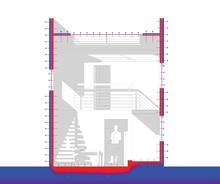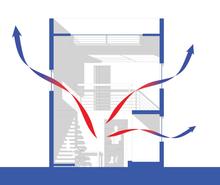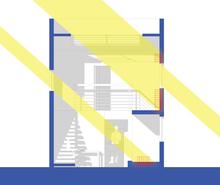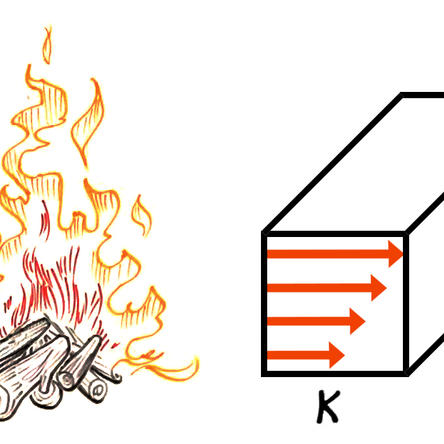You are here
Understanding fundamental heat flows from conduction, convection, and radiation is key to creating energy efficient buildings. Moisture flows are also important because moisture holds energy as “latent heat.”
Sensible vs. Latent Heat Flows
There are of two forms of heat flows: sensible heat and latent heat. Sensible heat flow results in a change in temperature. Latent heat flow results in a change in moisture content (often humidity of the air). Total heat flow is the sum of sensible and latent flows. Human comfort depends on providing acceptable levels of both temperature (sensible heat) and humidity (latent heat).
 |
"...but it's a dry heat." Hot dry air is actually less uncomfortable than hot humid air, because moisture holds energy as latent heat. |
Sensible heat: The heat associated with change in temperature of a substance/ material/space.
Latent heat: The release or storage of heat associated with change in phase of a substance, without a change in the substance’s temperature. In building design, this is often heat required to add/remove moisture content (humidity) in the air.
 |
| Sensible vs. latent heat: it takes over five times as much heat to turn water into steam at the same temperature than it does to heat liquid water from freezing to boiling temperatures. |
Whenever an object is at a temperature different from its surroundings, heat flows from hot to cold. Likewise, moisture flows from areas of greater concentration to areas of lower concentration.
For more information on moisture control, see: Infiltration & Moisture Control
Conduction, Convection, and Radiation
Buildings lose sensible heat to the environment (or gain sensible heat from it) in three principal ways:
1) Conduction: The transfer of heat between substances which are in direct contact with each other. Conduction occurs when heat flows through a solid.
2) Convection: The movement of gasses and liquids caused by heat transfer. As a gas or liquid is heated, it warms, expands and rises because it is less dense resulting in natural convection.
3) Radiation: When electromagnetic waves travel through space, it is called radiation. When these waves (from the sun, for example) hit an object, they transfer their heat to that object.
Dynamic Thermal Effects
Although the general principles remain the same, analysis of heat flow under dynamic (rapidly changing) conditions is more complex than under static or "steady-state" (unchanging) conditions.
The effects of heat storage within materials become a greater concern under dynamic conditions. Under static conditions, heat flow is primarily a function of temperature difference (the driving force) and thermal resistance (the resisting force). Under dynamic conditions, these two factors are still important, but heat storage in the envelope assembly moderates the temperature swings that would otherwise occur if the assembly could not absorb or give off heat.
Heat storage is a function of the density of a material and its specific heat; the product of these two properties is known as thermal capacity (or Thermal Mass).
Building materials gain or lose heat energy over time as ambient conditions change and these heat storage properties determine how much energy can be stored within a given material, and how quickly that energy will be gained or released.
See more on Thermal Mass.
Latent Heat Properties
When air is too humid, it needs to dehumidified to maintain occupant comfort. This dehumidification requires the removal of the latent heat and is an important function of HVAC systems. While less common, it is sometimes necessary to add humidity to buildings during very cold weather to compensate for the inability of colder air to hold moisture.
See Infiltration and Moisture Control for guidance on envelope design that takes this into account, see Humidity Control for how active systems handle it.

